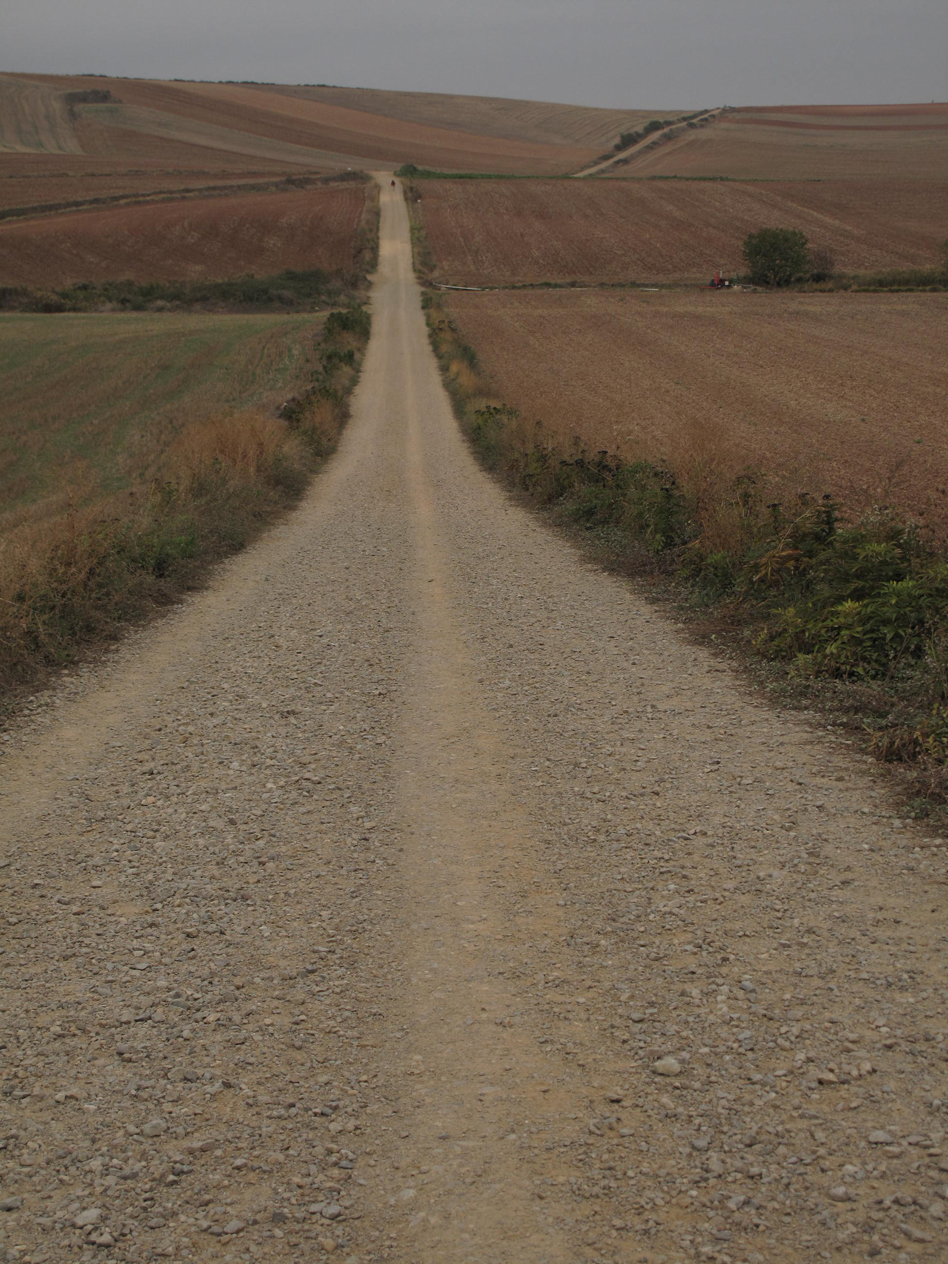With backpack, hiking boots and camera, local adventurer Christina Whiting set out on a journey in September of 2011. It began in St. Jean Pied de Port, France. Five hundred miles and nearly 40 days later, it ended in Santiago de Compostela, Spain. This journey is known as El Camino de Santiago, literally, “The Way of St. James.”
For more than 1,000 years, pilgrims have trekked across Europe to the alleged burial site of St. James, one of the apostles of Jesus. Numerous routes crisscross Europe before they converge in Santiago. The most popular route, and the one Whiting chose, is the Camino Francais, or “French Way.”
Whiting first learned of El Camino de Santiago when she was a young woman living in rural Alberta. Her mom subscribed to National Geographic Magazine, so maybe it was an article she saw. She doesn’t know for sure. But she remembers thinking it would be a neat thing to do someday.
“It’s always been kind of knocking at the back of my heart, to be honest,” she said.
Although she had wanted to walk the Camino the year she turned 40, it wasn’t until a year and a half later that the pieces began to fit together. In April of 2011, Whiting’s boyfriend, local photographer Taz Tally, was invited to teach a photography class that fall in the French town of San Sebastian. And San Sebastian just happened to be near the start of the Camino Francais.
Whiting describes the adventure as 20 years in the making, but just a few months in the training. To prepare for the nearly 500 miles on foot, she began by walking five miles from her home to town and back. First once a day. Then twice a day. Then with a backpack full of gear.
“That was really it for my training,” she said. “I just walked.”
From the beginning, Whiting had planned to walk the Camino by
herself. But she invited Talley to join her for the first day. As a whole though, she didn’t want to do it with someone else.
“It was perfect the way it was,” she said.
Although Whiting is not religious, she said she was moved in many ways on the Camino. For her, it was a walking meditation.
Days on the Camino went something like this: 7 a.m. Wake up. On the trail by 8 a.m. Walk for two-and-a-half hours, take off shoes, change socks and rest feet. Eat a snack. Walk a couple more hours. Stop for lunch. Take off shoes, change socks and rest again. Walk another two-and-a-half to four hours. Stop, find accommodations, shower, change clothes, attend to her nagging blister, wash dirty clothes and hang to dry. Make dinner or go out to dinner, and spend time talking to other pilgrims. If she had any energy left, she would explore the village, town or city she was in, visit a church to attend a pilgrim’s blessing service and read her guidebook for the next morning’s walk.
One thing she observed was that no one ever asked their fellow pilgrims why they were walking – but it was common to ask them where they were from. The oldest pilgrim she met was an 80-year-old man from Japan. The youngest, a 15-year-old boy from Israel. Many were walking for their third or fourth time.
“I was surprised by this because the Camino is not easy on the body – never mind the heart and spirit at times,” she said, adding, “After being home less than 48 hours, I understood the draw to return.”
Although she brought a small journal with, Whiting said that her Canon G10 became her visual journal.
One photo in particular represents the most profound moment of her journey. After reaching her destination of Santiago and resting for two days, Whiting said she felt compelled to continue her walk another 87 miles to the coastal community of Muxia, an extension of the pilgrimage trail. About three miles into the walk, she sat down on the side of the dirt trail and began crying. She wanted to push on, but was physically spent.
“I had met my goal of walking 500 miles, and I didn’t know why I couldn’t stop and celebrate. I didn’t understand why I felt the need to keep walking,” she said.
From across a field a little orange and white dog came bounding up to her. It laid its head in her lap while she cried into its fur.
“At that moment, he was my angel dog,” she said. She was able to take one picture of him before he bounded off again. After that, she made peace with the fact that she was done walking. She took a bus to the coast and treated herself to four days of relaxing by the water.
Whiting will share other stories and a slide show Tuesday, April 15, from 6-7:30 p.m. at the Homer Public Library. Photos from the Camino will be on display through June 30th.
Whiting said that she encourages everyone to walk the Camino and that she hopes to return to it this fall. “It will change your life,” she said.
Toni Ross is a freelance writer who lives in Homer.
Buen Camino: A Pilgrim’s Journey
Christina Whiting
Exhibit: April 4 through June 30, Reception and talk on April 15 at 6pm
Homer Public Library


